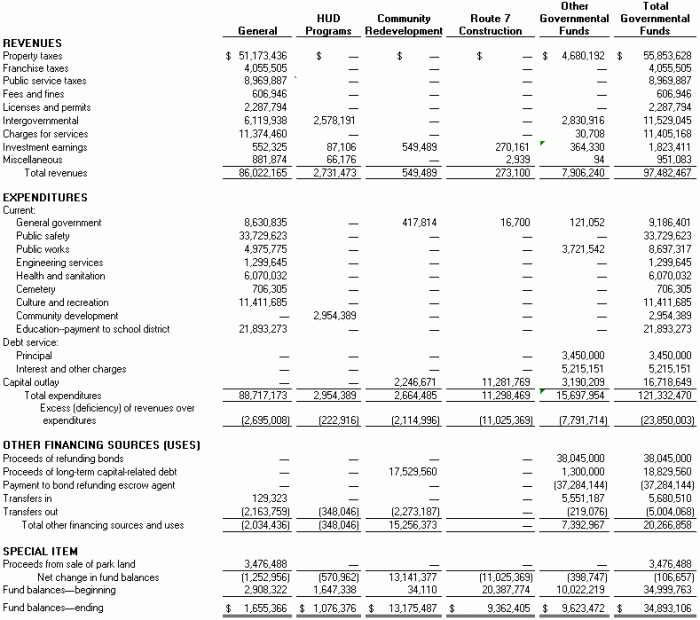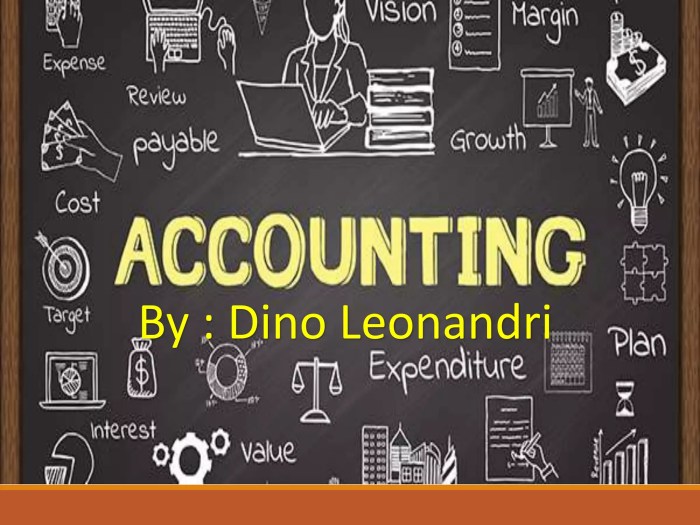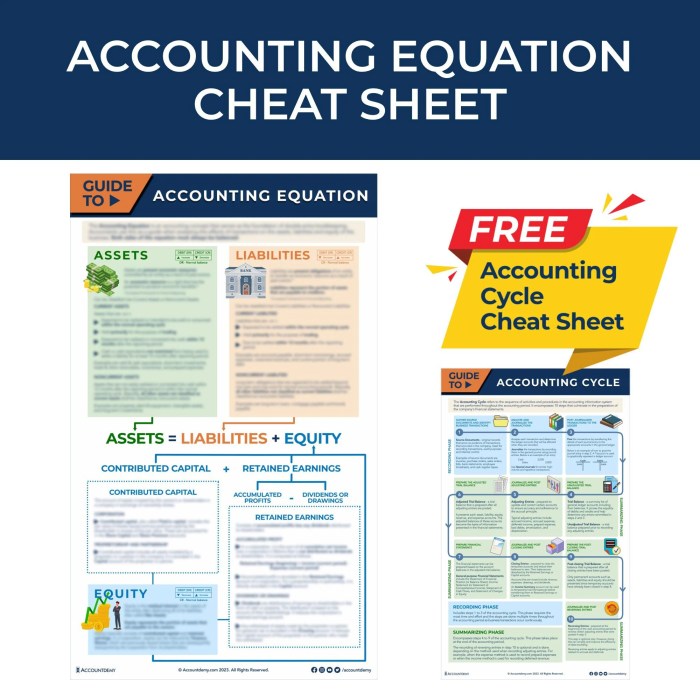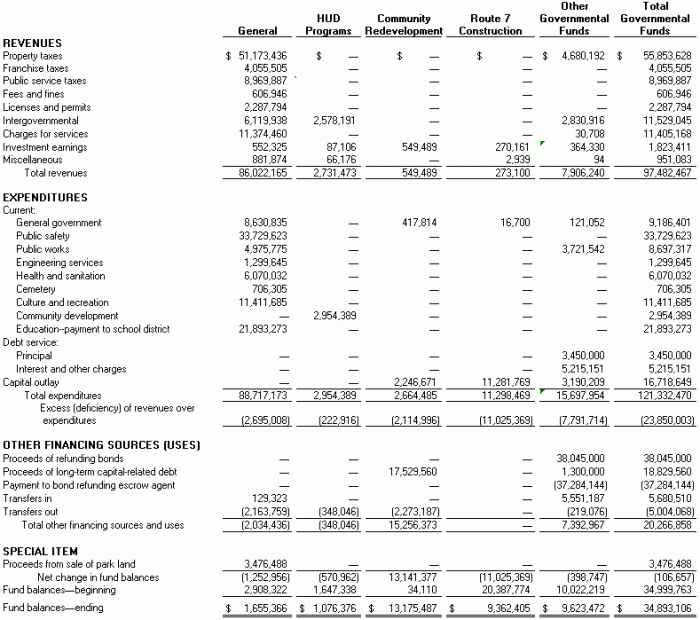
What is Fund Accounting: A Guide to Managing Finances
What is fund accounting? It’s the specialized method of accounting used by organizations that manage money for specific purposes, like endowments, grants, or projects. It’s all about keeping track of where the money comes from, where it goes, and ensuring it’s used in accordance with the intended purpose.
Imagine a school trying to manage donations for scholarships, a non-profit organization collecting funds for a specific cause, or a government agency handling taxpayer money for infrastructure projects. These organizations rely on fund accounting to maintain transparency, accountability, and financial stability.
This method allows them to track the flow of funds, ensure compliance with regulations, and report on the effectiveness of their programs.
Fund Accounting Basics: What Is Fund Accounting

Fund accounting is a specialized accounting method that focuses on tracking and managing financial resources based on their specific purpose or source. It’s a crucial tool for organizations that receive and manage funds from various sources, including grants, donations, and government allocations.Fund accounting ensures that resources are used for their intended purpose, maintaining accountability and transparency in financial management.
Types of Funds
Fund accounting categorizes financial resources into different types of funds, each with specific characteristics and regulations governing their use.
- Endowment Funds: These funds are established with the primary objective of generating income for a specific purpose, while preserving the original principal amount. Examples include funds set up for scholarships, research, or charitable causes.
- Operating Funds: These funds represent the core resources used for day-to-day operations, such as salaries, rent, and utilities. They are typically funded through revenue generated from the organization’s activities.
- Capital Funds: These funds are used for acquiring or improving long-term assets, such as buildings, equipment, or infrastructure. Capital funds can be financed through debt, grants, or internal resources.
Fund Accounting Principles

Fund accounting follows specific principles to ensure transparency, accountability, and proper management of resources. These principles are based on Generally Accepted Accounting Principles (GAAP) and are tailored to the unique characteristics of fund accounting.
Generally Accepted Accounting Principles (GAAP) for Fund Accounting
GAAP provides a framework for accounting practices, ensuring consistency and comparability in financial reporting. Fund accounting adheres to these principles, with specific modifications to accommodate the nature of funds.
- Accrual Basis of Accounting:Transactions are recorded when they occur, regardless of when cash is received or paid. This provides a more comprehensive view of financial performance and position.
- Entity Concept:Each fund is treated as a separate accounting entity, with its own assets, liabilities, and equity. This helps to track the financial performance and position of individual funds.
- Going Concern:Funds are assumed to operate indefinitely, allowing for the use of long-term accounting methods.
- Matching Principle:Expenses are matched with the revenues they generate in the same accounting period. This ensures that financial statements accurately reflect the financial performance of the fund.
- Materiality:Only significant transactions and events are recorded. This allows for a focus on the most relevant information.
- Consistency:Accounting methods are applied consistently from period to period. This enhances comparability of financial statements over time.
Statement of Financial Position and Statement of Activities
These financial statements are crucial for understanding the financial health and performance of a fund.
Fund accounting is a specialized area of accounting that focuses on tracking and managing assets and liabilities for organizations that hold and manage funds for specific purposes. These organizations can range from charities and non-profits to government agencies and even private trusts.
Changes in leadership can impact the direction of these organizations, as we saw recently with Global Uranium Corp’s announcement of a change to their executive management. This type of news can affect fund accounting practices as new leadership may prioritize different investment strategies or allocate funds to different projects.
Statement of Financial Position
This statement provides a snapshot of the fund’s assets, liabilities, and net assets at a specific point in time.
Assets
Liabilities = Net Assets
- Assetsrepresent the resources controlled by the fund. Examples include cash, investments, property, and equipment.
- Liabilitiesrepresent the obligations of the fund. Examples include accounts payable, salaries payable, and long-term debt.
- Net Assetsrepresent the residual claim of the fund’s owners on the assets after deducting liabilities. Net assets can be further classified into unrestricted, temporarily restricted, and permanently restricted.
Statement of Activities
This statement summarizes the fund’s revenues, expenses, and changes in net assets over a specific period.
Revenues
Expenses = Change in Net Assets
- Revenuesrepresent the inflows of resources that increase net assets. Examples include contributions, grants, and investment income.
- Expensesrepresent the outflows of resources that decrease net assets. Examples include program expenses, administrative expenses, and depreciation.
- Change in Net Assetsrepresents the net increase or decrease in the fund’s net assets during the period.
Best Practices for Maintaining Accurate and Transparent Fund Accounting Records
Maintaining accurate and transparent fund accounting records is essential for ensuring accountability and proper management of resources.
Fund accounting, a specialized area of accounting, focuses on tracking the financial resources of organizations that manage money for specific purposes. It’s a bit like keeping track of your own personal budget, but on a much larger scale. For example, imagine you’re decorating your home with a felt leaf wall decor DIY project.
You’d need to track your spending on felt, scissors, and other materials, just as fund accounting tracks the income and expenses of a non-profit or government agency.
- Establish Clear Policies and Procedures:Develop and implement comprehensive policies and procedures for all aspects of fund accounting, including budgeting, revenue recognition, expense allocation, and financial reporting.
- Use a Reliable Accounting System:Select a robust accounting software that meets the specific needs of the fund and provides adequate controls and features for fund accounting.
- Implement Strong Internal Controls:Establish and maintain effective internal controls to prevent errors, fraud, and misuse of funds. This includes segregation of duties, authorization procedures, and regular reconciliation of accounts.
- Ensure Timely and Accurate Recordkeeping:Maintain accurate and up-to-date accounting records, including supporting documentation for all transactions. This helps to ensure the reliability and accuracy of financial statements.
- Perform Regular Audits:Conduct regular audits of fund accounting records by independent auditors to ensure compliance with applicable regulations and best practices. This helps to identify and correct any errors or irregularities.
- Promote Transparency and Accountability:Provide regular financial reports to fund stakeholders, including donors, board members, and beneficiaries. This fosters trust and accountability.
Fund Accounting Cycle

The fund accounting cycle is a systematic process that encompasses all the stages involved in recording, tracking, and reporting financial transactions related to specific funds. It ensures proper management of resources and provides transparency in financial reporting.
Steps in the Fund Accounting Cycle
The fund accounting cycle comprises several interconnected steps that ensure the accurate and timely recording and reporting of financial information. These steps are:
- Transaction Recognition:This initial step involves identifying and documenting financial transactions that impact the fund’s resources. It’s crucial to accurately categorize transactions based on their nature and the fund they affect. For example, recognizing revenue from tuition fees, recording expenditures for salaries, or documenting donations received.
- Transaction Recording:Once transactions are recognized, they are recorded in the fund’s accounting system. This involves entering the transaction details, including date, amount, and relevant fund codes, into the appropriate journals and ledgers. This step ensures that all transactions are documented accurately and chronologically.
- Transaction Summarization:Periodically, typically at the end of an accounting period, transactions are summarized and aggregated into financial statements. This involves grouping similar transactions and calculating balances for each fund. This step provides a consolidated view of the fund’s financial position and performance.
- Financial Reporting:Finally, the summarized financial data is presented in a clear and concise format through financial reports. These reports provide stakeholders with a comprehensive overview of the fund’s financial health, including revenue, expenses, assets, liabilities, and fund balances. This step ensures transparency and accountability in fund management.
Key Documents and Records
The fund accounting cycle relies on a variety of documents and records to ensure accuracy and traceability. These documents serve as a basis for recording, summarizing, and reporting financial information. Some of the key documents include:
- Source Documents:These documents provide the initial evidence of a transaction. Examples include invoices, receipts, contracts, and payroll records. These documents are essential for verifying the accuracy of recorded transactions.
- Journals:Journals are chronological records of transactions. They provide a detailed account of each transaction, including the date, amount, and relevant fund codes. Common journals include the general journal, cash receipts journal, and cash disbursements journal.
- Ledgers:Ledgers are accounts that summarize the balances for each fund. They provide a consolidated view of the fund’s assets, liabilities, and equity. Examples include the general ledger, subsidiary ledgers, and budget ledgers.
- Financial Statements:Financial statements are formal reports that summarize the fund’s financial position and performance. Common statements include the balance sheet, income statement, and statement of cash flows. These statements are used by stakeholders to assess the fund’s financial health.
Fund Accounting Cycle Flow Chart
A flow chart visually depicts the interconnected steps of the fund accounting cycle. This helps to understand the sequence of events and the key documents involved.[Flow Chart Illustration] Explanation:The flow chart starts with the recognition of a financial transaction. This transaction is then documented in a source document.
Fund accounting is all about tracking money designated for specific purposes, like a school’s building fund or a non-profit’s outreach program. Sometimes, it’s helpful to visualize those funds, which is where a project like this easy clay votive DIY comes in handy.
Imagine each votive representing a different fund, and the candles burning inside symbolizing the progress made towards achieving those goals. Fund accounting, in a nutshell, is about ensuring those flames stay lit and lead to meaningful outcomes.
Next, the transaction is recorded in the appropriate journal. From the journal, the transaction is posted to the relevant ledger. The ledger summarizes the balances for each fund. Finally, the ledger balances are used to prepare financial statements, which are then distributed to stakeholders.
Fund Accounting Software
Fund accounting software is a specialized type of accounting software designed to manage the financial records of organizations with multiple funds. It helps streamline the complex processes involved in tracking, reporting, and auditing fund balances, ensuring compliance with regulations and donor requirements.
Benefits of Using Fund Accounting Software
Fund accounting software offers several benefits to organizations that manage multiple funds:
- Improved Accuracy and Efficiency:Automation of tasks like data entry, reconciliation, and reporting reduces the risk of errors and frees up staff time for more strategic tasks.
- Enhanced Transparency and Accountability:Clear and detailed reports provide stakeholders with a comprehensive view of fund performance and compliance, fostering trust and accountability.
- Simplified Compliance:Built-in features ensure adherence to relevant accounting standards and regulatory requirements, minimizing the risk of non-compliance.
- Streamlined Budgeting and Forecasting:Software tools enable accurate budget planning and forecasting, facilitating better financial management and decision-making.
- Centralized Data Management:Consolidating all fund data in one platform provides a single source of truth, eliminating the need for manual data aggregation and reducing inconsistencies.
Comparison of Fund Accounting Software Options
Fund accounting software options vary in features, pricing, and target audience. Here’s a comparison of some popular options:
- Nonprofit Software:These solutions are specifically designed for non-profit organizations and offer features like donor management, grant tracking, and reporting. Examples include Blackbaud’s Raiser’s Edge NXT, Salesforce Nonprofit Cloud, and DonorPerfect.
- Accounting Software with Fund Accounting Modules:Some general accounting software packages, like QuickBooks Online and Xero, offer add-on modules for fund accounting, catering to organizations with simpler fund management needs.
- Specialized Fund Accounting Software:These solutions are tailored for organizations with complex fund structures and reporting requirements. Examples include Abila MIP Fund Accounting, Sage Intacct, and Workiva Wdesk.
Comparison Table of Fund Accounting Software
The following table compares the features and pricing of some popular fund accounting software options:
| Software | Features | Pricing |
|---|---|---|
| Blackbaud Raiser’s Edge NXT | Donor management, grant tracking, fundraising analytics, reporting | Starts at $1,000 per month |
| Salesforce Nonprofit Cloud | CRM, donor management, program management, reporting | Pricing varies based on features and user count |
| DonorPerfect | Donor management, fundraising analytics, reporting, online giving | Starts at $99 per month |
| QuickBooks Online | General accounting, fund accounting module available | Starts at $25 per month |
| Xero | General accounting, fund accounting module available | Starts at $35 per month |
| Abila MIP Fund Accounting | Specialized fund accounting, budget management, reporting | Starts at $1,000 per month |
| Sage Intacct | Cloud-based accounting, fund accounting, budgeting, reporting | Pricing varies based on features and user count |
| Workiva Wdesk | Financial reporting, data management, compliance, auditing | Pricing varies based on features and user count |
Challenges in Fund Accounting
Fund accounting, while essential for managing and reporting on financial resources, presents unique challenges that require specialized knowledge and expertise. These challenges arise from the complexities of fund structures, regulatory compliance requirements, and the need to maintain transparency and accountability.
Complexity of Fund Structures
Fund structures can be intricate and varied, depending on the type of organization and its mission. Understanding the specific requirements of each fund is crucial for accurate accounting and reporting.
- Multiple Funds:Organizations often manage multiple funds, each with its own specific purpose, restrictions, and reporting requirements. This can create complexities in tracking transactions, allocating expenses, and generating reports.
- Donor Restrictions:Many funds have specific donor restrictions, such as designated use or time limitations. Fund accountants must carefully track these restrictions and ensure that funds are used appropriately.
- Investment Complexity:Funds may invest in various assets, including stocks, bonds, real estate, and other investments. Accounting for these investments requires specialized knowledge and expertise.
Regulatory Compliance
Fund accounting is subject to numerous regulations, including those governing nonprofit organizations, government entities, and investment funds. Failure to comply with these regulations can result in fines, penalties, and reputational damage.
- GAAP and FASB:Fund accountants must adhere to Generally Accepted Accounting Principles (GAAP) and Financial Accounting Standards Board (FASB) pronouncements, which are complex and subject to change.
- Government Regulations:Government entities and organizations receiving government funding must comply with specific regulations and reporting requirements, such as the Uniform Guidance.
- Donor Requirements:Donors may impose their own reporting requirements or restrictions on how funds can be used. Fund accountants must carefully track these requirements and ensure compliance.
Data Management and Reporting
Fund accounting involves managing large volumes of data, including transactions, donor information, investment details, and budget information. Ensuring the accuracy, completeness, and timely reporting of this data is essential for effective financial management.
- Data Integration:Integrating data from various sources, such as donor databases, investment platforms, and accounting systems, can be challenging.
- Reporting Requirements:Fund accountants must prepare various reports, including financial statements, donor statements, and regulatory filings, which require accurate and timely data.
- Transparency and Accountability:Fund accounting requires transparency and accountability to donors, stakeholders, and regulatory bodies. This necessitates clear and concise reporting that demonstrates the responsible use of funds.
Fund Accounting for Specific Industries
Fund accounting is a specialized area of accounting that is used to track and manage the financial resources of organizations that are not for profit. This includes organizations like non-profits, educational institutions, and government agencies. These organizations have unique requirements for accounting that differ from for-profit businesses.
Fund accounting helps these organizations ensure that their resources are used for their intended purposes and that they are held accountable for their financial activities.
Fund Accounting in Non-Profit Organizations, What is fund accounting
Non-profit organizations rely heavily on fund accounting to manage their donations, grants, and other contributions. They need to ensure that these funds are used for the specific purposes for which they were donated. This requires careful tracking of each donation and grant, as well as the expenses associated with them.Here are some examples of how fund accounting principles are applied in non-profit organizations:* Restricted Funds:These funds are donated or granted for specific purposes, such as a particular program or project.
Non-profits must track these funds separately and ensure that they are used only for the intended purpose.
Unrestricted Funds
These funds can be used for any purpose that supports the non-profit’s mission. However, non-profits must still track these funds and ensure that they are used in a way that is consistent with their overall financial plan.
Endowment Funds
These funds are invested to generate income for the non-profit. The principal of the endowment fund must be preserved, and only the income can be used for operating expenses.
Fund Accounting in Educational Institutions
Educational institutions, such as schools and universities, use fund accounting to manage their financial resources, which often come from a variety of sources, including tuition fees, government grants, and private donations. They must track these funds separately and ensure that they are used for their intended purposes.Here are some examples of how fund accounting principles are applied in educational institutions:* Tuition and Fees:These funds are used to cover the costs of providing education to students.
Educational institutions must track these funds separately and ensure that they are used for their intended purpose.
Government Grants
These funds are provided by the government to support specific programs or projects. Educational institutions must track these funds separately and ensure that they are used for the intended purpose.
Private Donations
These funds are donated by individuals or foundations to support specific programs or projects. Educational institutions must track these funds separately and ensure that they are used for the intended purpose.
Fund Accounting in Government Agencies
Government agencies use fund accounting to manage the public funds entrusted to them. They must track these funds separately and ensure that they are used for their intended purposes.Here are some examples of how fund accounting principles are applied in government agencies:* General Fund:This fund is used to finance the general operations of the government.
It includes revenues from taxes, fees, and other sources.
Special Revenue Funds
These funds are used to finance specific government programs, such as public education or transportation.
Capital Projects Funds
These funds are used to finance the acquisition or construction of long-term assets, such as buildings or infrastructure.
Key Differences in Fund Accounting Practices
| Industry | Key Differences ||—|—|| Non-profit Organizations | Focus on donor restrictions and compliance with non-profit accounting standards. || Educational Institutions | Focus on tracking tuition and fees, government grants, and private donations. || Government Agencies | Focus on managing public funds and complying with government accounting standards.
|
Emerging Trends in Fund Accounting
The world of fund accounting is constantly evolving, driven by technological advancements, regulatory changes, and the changing needs of investors. Staying ahead of these trends is crucial for fund accountants to ensure accuracy, efficiency, and compliance. This section will delve into some of the most prominent emerging trends shaping the future of fund accounting.
Increased Use of Automation and Artificial Intelligence (AI)
Automation and AI are transforming fund accounting processes, streamlining operations and improving accuracy. Fund accountants can leverage these technologies to automate repetitive tasks like data entry, reconciliation, and reporting, freeing up time for more strategic activities. AI can also be used to identify anomalies and potential errors in financial data, enhancing risk management and compliance.
- Automated Data Entry:AI-powered tools can extract data from various sources, such as invoices, trade confirmations, and bank statements, and automatically populate accounting systems. This eliminates manual data entry errors and saves significant time.
- Automated Reconciliation:AI algorithms can compare data from different systems, identifying discrepancies and automatically resolving simple reconciliation issues. This reduces the time and effort required for manual reconciliation, leading to more accurate and timely reporting.
- AI-Powered Reporting:AI can generate customized reports based on specific investor needs, providing real-time insights into portfolio performance and risk. This enhances transparency and communication with investors.
Growing Importance of Data Analytics
Data analytics is becoming increasingly critical in fund accounting, enabling fund accountants to extract valuable insights from vast amounts of data. This data can be used to monitor portfolio performance, identify trends, assess risk, and make more informed investment decisions.
- Performance Monitoring:Data analytics can track portfolio performance across various metrics, such as returns, risk, and asset allocation, providing a comprehensive view of investment strategies.
- Trend Analysis:By analyzing historical data, fund accountants can identify emerging trends in the market, helping them make better investment decisions and manage risk effectively.
- Risk Management:Data analytics can be used to assess and manage risk by identifying potential areas of concern and developing mitigation strategies.
Increased Focus on Regulatory Compliance
The regulatory landscape for fund accounting is constantly evolving, with new rules and regulations being introduced regularly. Fund accountants need to stay abreast of these changes and ensure their practices are compliant.
- Data Privacy Regulations:Regulations like the General Data Protection Regulation (GDPR) and the California Consumer Privacy Act (CCPA) require fund accountants to handle investor data with utmost care and security.
- Anti-Money Laundering (AML) and Know Your Customer (KYC) Regulations:These regulations require fund accountants to implement robust procedures for identifying and verifying investor identities, preventing money laundering and other financial crimes.
- Financial Reporting Standards:Fund accountants must comply with evolving financial reporting standards, such as IFRS and US GAAP, to ensure accurate and transparent financial reporting.
Cloud-Based Solutions
Cloud-based accounting software is gaining popularity in the fund accounting industry, offering several advantages over traditional on-premises systems.
- Scalability:Cloud-based solutions can easily scale up or down to accommodate changing business needs, providing flexibility and cost-effectiveness.
- Accessibility:Fund accountants can access data and applications from anywhere with an internet connection, enhancing collaboration and efficiency.
- Security:Cloud providers invest heavily in security infrastructure, providing robust protection against data breaches and cyberattacks.
Emphasis on ESG Investing
Environmental, social, and governance (ESG) investing is gaining momentum, with investors increasingly considering ESG factors when making investment decisions. Fund accountants need to adapt their practices to accommodate the growing demand for ESG reporting.
- ESG Data Collection and Reporting:Fund accountants need to collect and report ESG data to investors, providing transparency into the ESG performance of investments.
- ESG Risk Management:Fund accountants need to identify and manage ESG risks, ensuring that investments align with investor values and regulatory requirements.
Integration of Blockchain Technology
Blockchain technology is emerging as a potential disruptor in fund accounting, offering enhanced security, transparency, and efficiency.
- Secure Data Storage:Blockchain provides a secure and tamper-proof ledger for storing financial data, reducing the risk of fraud and data manipulation.
- Improved Transparency:Blockchain enables real-time tracking of transactions, providing greater transparency and accountability in fund accounting.
- Automated Processes:Blockchain can automate fund accounting processes, such as trade settlement and reconciliation, streamlining operations and reducing errors.


